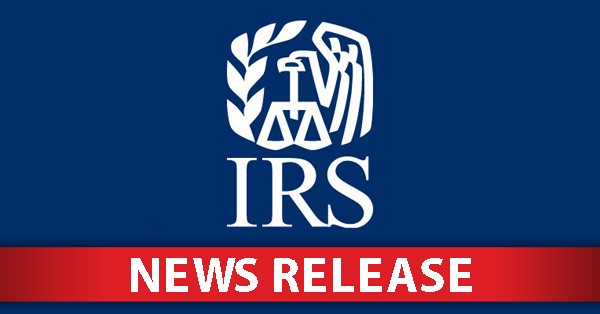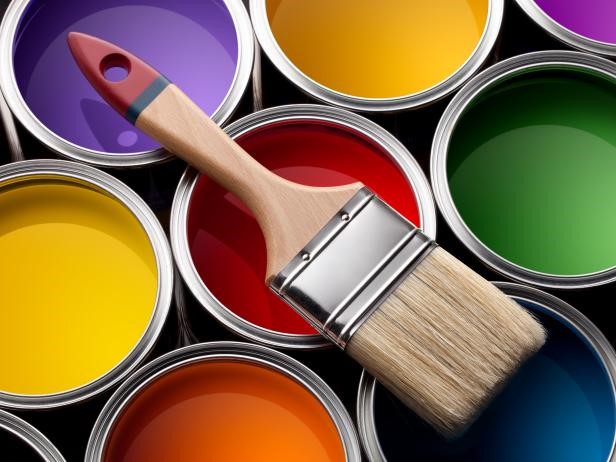【《We Chinese in America》Media Editor Tang Zhao, June 27, 2022】The Roe vs. Wade case, which has existed for nearly half a century to protect women's abortion rights, was finally overturned by the Supreme Court with a majority of conservative justices on the 24th. It is the fourth consecutive case in American politics since 2016. caused by a major turning point.( Image credit: NBC News)
- McConnell blocks Obama's nomination
The death of staunchly anti-abortion conservative Justice Antonin Scalia in 2016 appeared to end conservatives' hopes of overturning Roe's case; President Barack Obama's nomination of the justices will be held for hearings and votes. McConnell announced "The American people have a say in the selection of justices, so the seat of justices cannot be filled until a new president is elected."
A month later, President Obama's nomination of Judge Merrick Garland was praised by Senate Republicans, but McConnell refused to hold a nomination hearing, leading to Scalia's replacement in 2016. President Trump's nomination.
- Trump nominates conservative candidates after being elected president
Trump was elected president in 2016, and nominated Neil Gorsuch to fill Sculley shortly after taking office to support overturning Roe v. Wade as part of his campaign promise.
- Centrist Justice Kennedy retires
Justice Anthony M. Kennedy, the Republican presidential nominee who announced his retirement at age 81, voted for Roe v. Wade.
Kennedy has a dilemma about abortion. As a Catholic, he believes abortion is immoral, but believes that the Constitution protects individual liberties and that people have the right to make choices about their lives.
But Kennedy's retirement paved the way for Trump's nomination of Brett Kavanaugh as his replacement, whose Senate hearing narrowly passed 50-48 to a key vote of Susan Collins ), the senator said, Kavanaugh privately assured her that the Roe case was a foregone conclusion, making her feel he would not overturn previous precedent.
- Liberal Justice Ginsburg dies
Liberal Justice Ruth Ginsburg left on September 18, 2020, after years of battling cancer, just six weeks before the presidential election. Some states had begun early voting, but Senate Majority Leader Mike Connor abandoned his earlier position, arguing that Trump should immediately nominate Ginsburg's replacement. Roe v. Wade was wrongly decided by Trump's nomination of Amy Coney Barrett, who believes abortion is immoral.
(Source: World News Network)
This website has a free subscription function, please enter your email address and name (any nickname) in the upper right corner of the page. After subscribing, you can receive timely updates of the website. I hope that new and old readers will actively subscribe, so that we have the opportunity to provide you with better services
Please click: Home (wechineseus.com) for more news and content on this website
Follow The Chinese Media's Twitter account: https://twitter.com/wechineseinus
Follow The Chinese Media's Facebook account: https://www.facebook.com/wechineseinamerica/
【《We Chinese in America》Media Editor Tang Zhao, June 26, 2022】Per County of San Diego Communications Office, birds do it, bees do it, and without them and all the other pollinators in our world, life as we know it wouldn’t exist ― no flowers, no food, no terrestrial ecosystems. (Photo credit: County of San Diego Communications Office)
That’s why the County of San Diego and its Department of Agriculture, Weights and Measures (AWM) want to help the public celebrate National Pollinator Week through June 26!
Starting Tuesday, AWM had an interactive display up for visitors from 8 a.m. to 5 p.m. in their office lobby, located at 9325 Hazard Way in San Diego, where people could learn more about pollinators.
At 10 a.m. Friday June 24, the department and master gardeners from the University of California Cooperative Extension hosted a pollinator presentation for the public at the Demonstration Garden at the County Operations Center.
And Friday night, the County Administration Center was lit to honor the most famous pollinators of all ― bees ― and their keepers!
National Pollinator Week is held every year the world over to support pollinator health. The U.S. Senate’s unanimous approval and designation of a week in June as National Pollinator Week was a needed step to addressing the issue of declining pollinator populations. The week gives scientists and the public a special week to celebrate pollinators and spread the word about what we all can do to protect them.
Roughly 75% of all flowering plant species need animal pollinators to reproduce.
AWM supports local farmers and the County’s $1.8 billion agriculture industry by protecting native plant habitat for pollinators including bees, butterflies, bats, moths and flies through programs that help prevent the introduction of invasive plants, pests and diseases.
In addition, AWM’s Apiary Program helps ensure the health and safety of managed bee colonies by inspecting apiaries and providing outreach about the importance of pollinators.
You can help pollinators by sharing Pollinator Week on your social media, building native bee houses, planting pollinator habitat in your yard and many other ways. For more information about how you can help, please visit pollinator.org, UC Cooperative Extension and AWM’s Apiary Program, or call AWM’s Bee Hotline at 1-800-200-BEES (2337).
Source: County of San Diego Communications Office
This website has a free subscription function, please enter your email address and name (any nickname) in the upper right corner of the page. After subscribing, you can receive timely updates of the website. I hope that new and old readers will actively subscribe, so that we have the opportunity to provide you with better services
Please click: Home (wechineseus.com) for more news and content on this website
Follow The Chinese Media's Twitter account: https://twitter.com/wechineseinus
Follow The Chinese Media's Facebook account: https://www.facebook.com/wechineseinamerica/

【《We Chinese in America》Media Editor Tang Zhao, June 24, 2022】As an ongoing effort to enhance our valuable service to We Chinese in America website readers, We Chinese in America website posts English and Chinese versions of “IRS News Release” , “IRS Fact Sheets”, and “tax tips” directly received from IRS Media Relations Office in Washington, D.C.. We are pleased to take on this important role partnering with IRS to better inform the public.
IRS issues Superfund chemical excise tax rates
IR-2022-132, June 24, 2022
WASHINGTON — The Internal Revenue Service announced today that it has prescribed tax rates for 121 taxable substances that are subject to the Superfund chemical excise tax imposed by section 4671(a) of the Internal Revenue Code (Code).
Taxable substances are those substances listed in either section 4672(a)(3) of the Code or Notice 2021-66. Substances may be added or removed from the list of taxable substances at a later date.
The rates will be included in the instructions to Form 6627, Environmental Taxes, and under Recent Developments for Form 6627, Environmental Taxes.
|
Taxable Substance |
Tax Rate per Ton |
|
1,3-butylene glycol |
$ 7.28 |
|
1,4 butanediol |
$ 4.68 |
|
1,5,9-cyclododecatriene |
$ 9.74 |
|
2-ethyl hexanol |
$ 7.16 |
|
2-ethylhexyl acrylate |
$ 7.34 |
|
acetone |
$ 20.06 |
|
acetylene black |
$ 10.52 |
|
acrylic acid resins |
$ 5.65 |
|
methacrylic acid resins |
$ 14.94 |
|
acrylonitrile |
$ 9.38 |
|
adipic acid |
$ 6.13 |
|
adiponitrile |
$ 8.57 |
|
allyl chloride |
$ 10.38 |
|
alpha-methylstyrene |
$ 9.93 |
|
ammonium nitrate |
$ 1.49 |
|
aniline |
$ 9.40 |
|
benzaldehyde |
$ 8.47 |
|
benzoic acid |
$ 7.31 |
|
bisphenol-A |
$ 10.23 |
|
butanol |
$ 6.31 |
|
butyl acrylate |
$ 6.84 |
|
butyl benzyl phthalate |
$ 12.15 |
|
carbon tetrachloride |
$ 10.62 |
|
chlorinated polyethylene |
$ 10.25 |
|
chloroform |
$ 10.51 |
|
chromic acid |
$ 4.37 |
|
cumene |
$ 9.74 |
|
cyclododecanol |
$ 9.05 |
|
cyclohexane |
$ 10.02 |
|
decabromodiphenyl oxide |
$ 17.99 |
|
di-2 ethyl hexyl phthalate |
$ 7.37 |
|
diethanolamine |
$ 6.01 |
|
diglycidyl ether of bisphenol-A |
$ 13.86 |
|
diisopropanolamine |
$ 12.76 |
|
dimethyl terephthalate |
$ 5.91 |
|
dimethyl-2, 6-naphthalene dicarboxylate |
$ 6.81 |
|
di-n-hexyl adipate |
$ 8.23 |
|
diphenyl oxide |
$ 13.73 |
|
diphenylamine |
$ 10.28 |
|
epichlorohydrin |
$ 12.89 |
|
ethyl acrylate |
$ 4.09 |
|
ethyl alcohol for nonbeverage use |
$ 5.94 |
|
ethyl chloride |
$ 4.52 |
|
ethyl methyl ketone |
$ 7.60 |
|
ethyl benzene |
$ 9.74 |
|
ethylene dibromide |
$ 9.03 |
|
ethylene dichloride |
$ 6.62 |
|
ethylene glycol |
$ 4.38 |
|
ethylene oxide |
$ 6.23 |
|
ferrochrome ov 3 pct. carbon |
$ 4.83 |
|
ferrochromium nov 3 pct |
$ 4.83 |
|
hexabromocyclododecane |
$ 9.11 |
|
hexamethylenediamine |
$ 8.93 |
|
isobutyl acetate |
$ 4.47 |
|
Isophthalic acid |
$ 6.23 |
|
isopropyl acetate |
$ 4.54 |
|
Isopropyl alcohol |
$ 6.82 |
|
linear alpha olefins |
$ 9.74 |
|
maleic anhydride |
$ 5.75 |
|
melamine |
$ 4.28 |
|
methyl acrylate |
$ 5.39 |
|
methyl chloroform |
$ 6.37 |
|
methyl isobutyl ketone |
$ 23.65 |
|
methyl methacrylate |
$ 14.75 |
|
methylene chloride |
$ 10.33 |
|
monochlorobenzene |
$ 10.12 |
|
monoethanolamine |
$ 5.96 |
|
monoisopropanolamine |
$ 11.74 |
|
nickel oxide |
$ 7.03 |
|
normal butyl acetate |
$ 4.47 |
|
normal propyl acetate |
$ 3.73 |
|
nylon 6/6 |
$ 8.67 |
|
ortho-dichlorobenzene |
$ 10.35 |
|
ortho-nitrochlorobenzene |
$ 7.49 |
|
para-dichlorobenzene |
$ 10.35 |
|
para-nitrochlorobenzene |
$ 7.49 |
|
para-nitrophenol |
$ 8.59 |
|
pentaerythritol |
$ 3.86 |
|
perchloroethylene |
$ 10.89 |
|
phenol |
$ 12.47 |
|
phenolic resins |
$ 9.86 |
|
phosphorous pentasulfide |
$ 2.49 |
|
phosphorous trichloride |
$ 6.21 |
|
phthalic anhydride |
$ 7.01 |
|
poly 1,4 butyleneterephthalate |
$ 7.21 |
|
poly(propylene)glycol |
$ 10.38 |
|
poly(propylene/ethylene)glycol |
$ 8.84 |
|
poly(propyleneoxy)sucrose |
$ 2.04 |
|
poly(propyleneoxy/ethyleneoxy)sucrose |
$ 2.57 |
|
polyalphaolefins |
$ 11.37 |
|
polybutadiene |
$ 9.74 |
|
polybutene |
$ 9.74 |
|
polybutylene |
$ 9.74 |
|
polybutylene/ethylene |
$ 9.74 |
|
polycarbonate |
$ 10.84 |
|
polyethylene resins, total |
$ 9.74 |
|
polyethylene terephthalate pellets |
$ 6.82 |
|
polypropylene |
$ 9.74 |
|
polypropylene resins |
$ 9.74 |
|
polystyrene homopolymer resins |
$ 9.93 |
|
polyvinylchloride resins |
$ 7.46 |
|
propanol |
$ 5.47 |
|
propylene glycol |
$ 10.38 |
|
propylene oxide |
$ 13.60 |
|
styrene |
$ 9.93 |
|
styrene-butadiene, latex |
$ 9.84 |
|
synthetic linear fatty alcohol ethoxylates |
$ 7.12 |
|
synthetic linear fatty alcohols |
$ 9.29 |
|
terephthalic acid |
$ 6.23 |
|
tetrabromobisphenol-A |
$ 14.79 |
|
tetrachlorophthalic anhydride |
$ 8.95 |
|
tetrahydrofuran |
$ 5.78 |
|
toluene diisocyanate |
$ 10.85 |
|
toluenediamine |
$ 9.18 |
|
trichloroethylene |
$ 10.79 |
|
triethanolamine |
$ 6.04 |
|
triisopropanolamine |
$ 12.84 |
|
trimethylolpropane |
$ 4.63 |
|
urea |
$ 3.01 |
|
vinyl acetate |
$ 3.83 |
|
vinyl chloride |
$ 7.46 |
Source: IRS News Release
Internal Resource Service
Media Relation Office
Washington, D. C
Media Contact: 202 317 4000
Public Contact: 800 829 1040
This website has a free subscription function, please enter your email address and name (any nickname) in the upper right corner of the page. After subscribing, you can receive timely updates of the website. I hope that new and old readers will actively subscribe, so that we have the opportunity to provide you with better services
Please click: Home (wechineseus.com) for more news and content on this website
Follow The Chinese Media's Twitter account: https://twitter.com/wechineseinus
Follow The Chinese Media's Facebook account: https://www.facebook.com/wechineseinamerica/
【《We Chinese in America》Media Editor Tang Zhao, June 25, 2022】 Forget painter’s remorse. This is your no-regret strategy for choosing the perfect paint color for your home.( Painting Color Image from HGTV)
The most arduous process in painting your home might just be selecting a color. Sure, removing wallpaper or trying to give a dark ceiling a white paint job can be difficult. But mind-numbingly stressful? Typically not. Now add multiple rooms to your paint color to-do list and you have your work set out for you.
If you're wondering where to begin when it comes to picking paint colors, start by taking a look around your home, says Sue Kim, color marketing director at Valspar. "Some of your favorite home decor pieces have color palettes already built in to help inspire color throughout your home," she says. "Pick a favorite accessory piece in your home to work the color palette around, whether it be a painting, patterned accent pillow, or vase."
We asked Kim to spill the secrets for selecting a color palette without fear of painter's remorse. Here are the must-dos for picking paint that will make the process a little less daunting.
- Go Outdoors
If you're starting with a blank slate, whether moving into a new home or ditching your furnishings for a total refresh, start by looking at the colors outside your windows. "Bringing colors from the outside landscape into your home is a great approach," Kim says. You'll find that these earth-tone colors naturally work well together and create a soothing space inside, too.
"With the popularity of biophilic design in home trends, being connected to the natural environment has never been more important to creating a relaxed calming environment," Kim says. Organic paint colors designed to create a calming environment are both on-trend and neutral enough for lasting appeal, which could even boost your home value if resale is on the horizon.
- Start with a Neutral Foundation
"Paint trends continue to evolve with home interior and lifestyle trends," says Kim. "To keep your home feeling fresh and timeless, keep the overall foundational color of your home a neutral." From there, it's as simple as bringing in trendier colors in ways that can easily be swapped out or updated, like cabinets, small decor accents, and even doors. That way, your home stays current but doesn't require a full overhaul with each new color of the year.
- Make It Cohesive
Just because you opt for a soft shade of sage green in one room, doesn't mean you need to swath every room with that color from crown molding to baseboards. However, your selections do need to make sense and flow from one room to another. "In transitional spaces, like foyers and hallways, use neutral shades or a lighter option than used in other rooms," Kim says. "For example, if you have a navy living room, paint the connecting hallways a light gray with a blue undertone. It's a nice transition in tone and less contrast as you move from space to space."
- Utilize Paint Chips and Swatches
The color selection products offered at paint and hardware stores are designed to help make your life easier—not just give you a million more choices. Use fan decks to help narrow down your selection. Once you've picked three colors, you're in the home stretch. Next, hold paint chips against the wall to see which works best in your space.
"If you are wanting even more confirmation on which paint color to choose once you have narrowed a shade from paint chips, try painting a small swatch on your wall," says Kim. "You can get a color sample at the store. [It's] a great way to test the color on the wall and see how the shade looks throughout the day with natural lighting and home furnishings."
Factors such as sun exposure, your decor, and existing architectural details all play a role in how a paint color works in your room. You won't be able to see whether they harmonize unless you give colors a chance to play together first.
- Get Smart
If you're someone who prefers to let technology do the heavy lifting, most paint brands now have programs that can help you select paint colors and show you how they will look in your space. They can also ensure you don't need a mid-project trip to the hardware store. "Valspar's paint calculator is a fantastic resource when you're ready to start your project," says Kim. "Oftentimes, you can be uncertain about the amount of paint needed, and by simply typing in the measurements of the space and product, we are able to help estimate the amount of paint you will need to complete the job."
- Find Common Ground
Choosing a paint color on your own is hard enough, but selecting a paint color with your spouse or other family members can turn into a full-on battle if you're working with different design aesthetics. For these situations, Kim suggests starting in separate (open-minded) corners.
"Have each individual narrow down their top color choices, bring those shades together, and narrow down from those options. Keep an open mind and try to visualize the other person's color choice," she says. If you still can't agree, table the discussion for another day. If you're in a stalemate, consider consulting a color expert who can help narrow down selections and even pull a paint color scheme based on your combined personal styles.
Gone are the days of letting blah walls sit plain for far too long because you don't know where to begin with selecting paint colors. With this paint plan, you'll be ready to roll in no time.
(Source: Better Homes and Gardens)
This website has a free subscription function, please enter your email address and name (any nickname) in the upper right corner of the page. After subscribing, you can receive timely updates of the website. I hope that new and old readers will actively subscribe, so that we have the opportunity to provide you with better services
Please click: Home (wechineseus.com) for more news and content on this website
Follow The Chinese Media's Twitter account: https://twitter.com/wechineseinus
Follow The Chinese Media's Facebook account: https://www.facebook.com/wechineseinamerica/

【《We Chinese in America》Media Editor Tang Zhao, June 24, 2022】As an ongoing effort to enhance our valuable service to We Chinese in America website readers, We Chinese in America website posts English and Chinese versions of “IRS News Release” , “IRS Fact Sheets”, and “tax tips” directly received from IRS Media Relations Office in Washington, D.C.. We are pleased to take on this important role partnering with IRS to better inform the public.
IRS issues Superfund Chemical Excise Taxes FAQs
FS-2022-31, June 2022
The Infrastructure Investment and Jobs Act (IIJA) reinstated the excise taxes imposed on certain chemicals and imported chemical substances under Internal Revenue Code sections 4661 through 4672 beginning July 1, 2022. The Superfund chemical taxes will be reported on Form 720, Quarterly Federal Excise Tax Return, and Form 6627, Environmental Taxes.
These FAQs detail what the Superfund chemical excise tax is, how the tax is computed, and who may be liable for the tax.
These FAQs are being issued to provide general information to taxpayers and tax professionals as expeditiously as possible. Accordingly, these FAQs may not address any particular taxpayer’s specific facts and circumstances, and they may be updated or modified upon further review. Because these FAQs have not been published in the Internal Revenue Bulletin, they will not be relied on or used by the IRS to resolve a case. Similarly, if an FAQ turns out to be an inaccurate statement of the law as applied to a particular taxpayer’s case, the law will control the taxpayer’s tax liability. Nonetheless, a taxpayer who reasonably and in good faith relies on these FAQs will not be subject to a penalty that provides a reasonable cause standard for relief, including a negligence penalty or other accuracy-related penalty, to the extent that reliance results in an underpayment of tax. Any later updates or modifications to these FAQs will be dated to enable taxpayers to confirm the date on which any changes to the FAQs were made. Additionally, prior versions of these FAQs will be maintained on IRS.gov to ensure that taxpayers, who may have relied on a prior version, can locate that version if they later need to do so.
More information about reliance is available. These FAQs were announced in IR-2022-131.
Superfund Chemical Excise Taxes
Q1. What are the Superfund chemical excise taxes? (added June 24, 2022)
A1. There are two separate Superfund chemical excise taxes: a tax on the sale or use of “taxable chemicals” under section 4661 of the Internal Revenue Code and a tax on the sale or use of imported “taxable substances” under section 4671 (all section references are to the Internal Revenue Code unless otherwise stated).
Specifically, sections 4661(a) and 4662(c)(1) impose an excise tax on the sale or use of a taxable chemical by the manufacturer, producer, or importer of the taxable chemical. See question 3 for more information on taxable chemicals and question 6 for more information on calculating the tax imposed by section 4661 (section 4661 tax).
Section 4671(a) imposes an excise tax on the sale or use of a taxable substance by the importer of the taxable substance. See questions 4-5 for more information on taxable substances and questions 7-9 for more information on calculating the tax imposed by section 4671 (section 4671 tax).
Q2. When do the Superfund chemical excise taxes go into effect? (added June 24, 2022)
A2. July 1, 2022. The Superfund chemical excise taxes previously expired on December 31, 1995. They were reinstated by section 80201(c)(3) of the Infrastructure Investment and Jobs Act (Public Law 117-58, 135 Stat. 429 (2021)), effective July 1, 2022, with modifications to the applicable rates of tax and other provisions related to those taxes. Accordingly, a manufacturer, producer, or importer of a taxable chemical is subject to the section 4661 tax on the sale or use of the taxable chemical on or after July 1, 2022. An importer of a taxable substance is subject to the section 4671 tax on the sale or use of the taxable substance on or after July 1, 2022.
Q3. What is a taxable chemical? (added June 24, 2022)
A3. A taxable chemical is a chemical that is (i) listed in section 4661(b), and (ii) manufactured or produced in the United States or entered into the United States for consumption, use, or warehousing. There are 42 chemicals listed in section 4661(b).
Q4. What is a taxable substance? (added June 24, 2022)
A4. A taxable substance is any substance that, at the time of sale or use by the importer of the substance, is listed as a taxable substance. See section 4672(a)(1). A substance is listed as a taxable substance if it is listed under section 4672(a)(3), or if the Secretary of the Treasury or her delegate (Secretary) has added it to the list of taxable substances pursuant to section 4672(a)(2) or (4). See Notice 2021-66, 2021-52 I.R.B. 901, for the initial list of substances that the Secretary has added to the list of taxable substances.
At the time of publication of these FAQs, 151 substances are listed as taxable substances. That number will likely change as substances are added to or removed from the list of taxable substances pursuant to section 4672(a)(2) or (4).
Q5. How are substances added to or removed from the list of taxable substances? (added June 24, 2022)
A5. There are two ways a substance can be added to or removed from the list of taxable substances pursuant to section 4672(a)(2) and (4).
First, a substance can be added to the list of taxable substances by the Secretary, in consultation with the Administrator of the Environmental Protection Agency and the Commissioner of U.S. Customs and Border Protection, if the Secretary determines that taxable chemicals constitute more than 20 percent of the weight (or more than 20 percent of the value) of the materials used to produce the substance (determined on the basis of the predominant method of production). A substance may be removed from the list of taxable substances if the Secretary determines that taxable chemicals constitute 20 percent or less of the weight and 20 percent or less of the value of the materials used to produce the substance (determined on the basis of the predominant method of production).
Second, an importer or exporter of a substance (or other interested person) can petition the Secretary to add the substance to or remove the substance from the list of taxable substances. For purposes of claiming refunds under section 4662(e) for section 4661 tax paid on chemicals used in the production of an exported substance, in the case of a petition of an importer or exporter (i) that is filed and accepted by the Secretary before January 1, 2023, (ii) that seeks to add the substance to the list of taxable substances, and (iii) based on which the Secretary adds the substance to the list of taxable substances, both the filing date of the petition and the date the substance is added to the list of taxable substances will be deemed to be July 1, 2022. More information on the procedures for petitioning the Secretary to add or remove substances from the list of taxable substances will be released in advance of July 1, 2022.
Q6. How do I calculate the section 4661 tax? (added June 24, 2022)
A6. The section 4661 tax is imposed as a rate per ton of a taxable chemical. Part II of Form 6627, Environmental Taxes, will be updated to reflect the tax rate per ton of each taxable chemical. See also section 4661(b) for the tax rate for taxable chemicals.
Q7. I am an importer of taxable substances. How do I calculate the section 4671 tax? (added June 24, 2022)
A7. The amount of the section 4671 tax with respect to any taxable substance is generally the amount of section 4661 tax that would have been imposed on the taxable chemicals used in the manufacture or production of the taxable substance if the taxable chemicals had been sold in the United States for use in the manufacture or production of the taxable substance. See section 4671(b)(1).
Q8. What happens if an importer does not calculate the section 4671 tax? (added June 24, 2022)
A8. If the importer does not calculate the section 4671 tax for a taxable substance and the IRS has prescribed a tax rate for the taxable substance, the tax is calculated using the rate prescribed by the IRS. See section 4671(b)(3).
If the importer does not calculate the section 4671 tax for a taxable substance and the IRS has not prescribed a tax rate for the taxable substance, then the amount of tax is 10 percent of the appraised value of the taxable substance as of the time the taxable substance was entered into the United States for consumption, use, or warehousing. See Section 4671(b)(2).
Q9. Will the IRS prescribe tax rates for taxable substances? (added June 24, 2022)
A9. The IRS is working on calculating tax rates for taxable substances and will release the tax rates as they become available. As noted above, importers are not required to use the IRS-prescribed tax rates for the section 4671 tax and may calculate their own rates.
Q10. Who is responsible for reporting and paying Superfund chemical excise taxes? (added June 24, 2022)
A10. For taxable chemicals, the manufacturer, producer, or importer of the taxable chemical is responsible for reporting and paying the section 4661 tax to the IRS. For taxable substances, the importer of the taxable substance is responsible for reporting and paying the section 4671 tax to the IRS.
Q11. How are the Superfund chemical excise taxes reported? (added June 24, 2022)
A11. The Superfund chemical excise taxes are reported on Form 6627, Environmental Taxes, which is attached to Form 720, Quarterly Federal Excise Tax Return.
Q12. When is the first return due? (added June 24, 2022)
A12. The first return, for the calendar quarter ending on September 30, 2022, is due by October 31, 2022.
Q13. Are semimonthly deposits required? (added June 24, 2022)
A13. Yes. Taxpayers must make semimonthly deposits of the Superfund chemical excise taxes. A semimonthly period is the first fifteen (15) days of a calendar month or the portion of a calendar month following the 15th day of the month. See § 40.0-1(c) and § 40.6302(c)-1 of the Excise Tax Procedural Regulations.
However, Notice 2022-15, 2022-18 I.R.B. 1043, provides transitional relief for the third and fourth calendar quarters of 2022, and the first calendar quarter of 2023, regarding the failure to deposit penalties imposed by section 6656 for failures to deposit Superfund chemical excise taxes through March 31, 2023.
Q14. Under what circumstances is registration required? (added June 24, 2022)
A14. Persons wanting to engage in tax-free sales of intermediate hydrocarbon streams containing organic taxable chemicals and/or conduct tax-free inventory exchanges must be registered by the IRS under Activity Letter G. Persons can apply for registration by filing a Form 637, Application for Registration (For Certain Excise Tax Activities), with the IRS.
Q15. Is there a way to check the status of an application for Activity Letter G registration? (added June 24, 2022)
A15. Yes. Applicants for registration may call (859) 320-4091 and select menu option #1.
IRS-FAQ
Source: IRS Fact Sheets
Internal Resource Service
Media Relation Office
Washington, D. C
Media Contact: 202 317 4000
Public Contact: 800 829 1040
本网站已经开通免费订阅功能,请在网页右上角输入您的电邮地址及名字(任何昵称)。订阅后您可以及时收到网站的更新通知。希望新老读者踊跃订阅,让我们有机会能够为您提供更好的服务。
请点击: 主頁 (wechineseus.com) 浏览本网站更多的新闻和内容
请关注《华人》媒体的推特帐户: https://twitter.com/wechineseinus
请关注《华人》媒体的脸书帐户https://www.facebook.com/wechineseinamerica/















